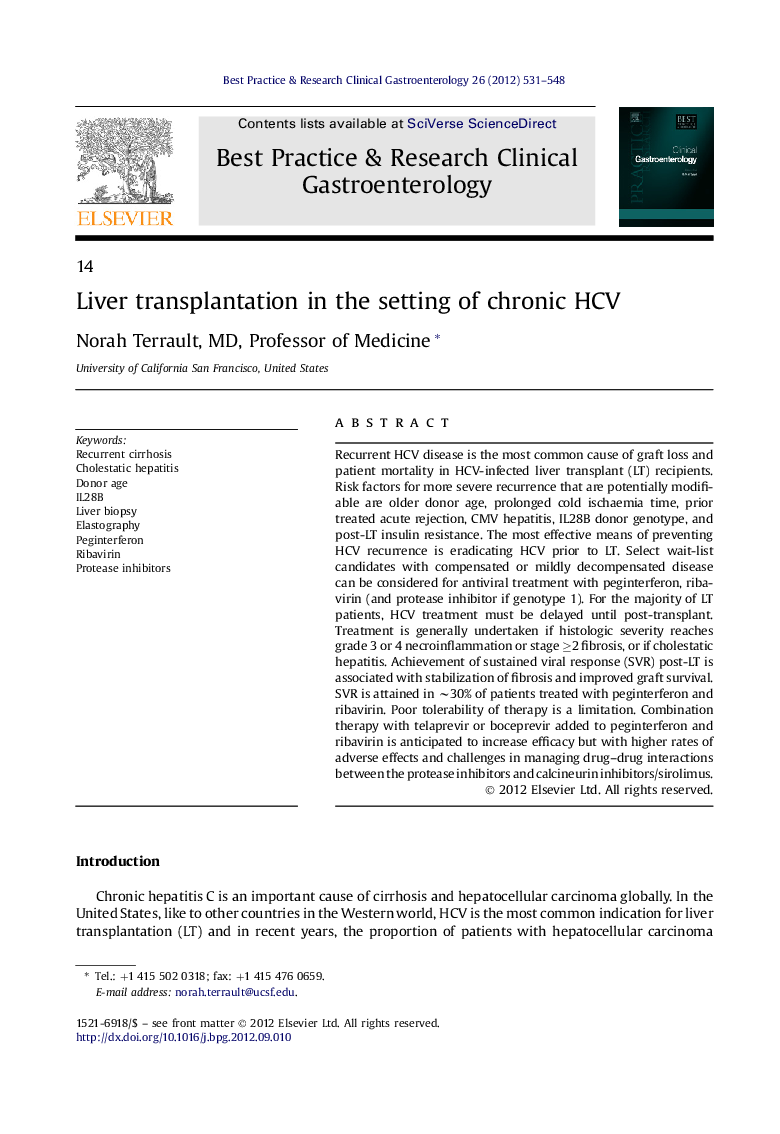| کد مقاله | کد نشریه | سال انتشار | مقاله انگلیسی | نسخه تمام متن |
|---|---|---|---|---|
| 3254203 | 1207187 | 2012 | 18 صفحه PDF | دانلود رایگان |

Recurrent HCV disease is the most common cause of graft loss and patient mortality in HCV-infected liver transplant (LT) recipients. Risk factors for more severe recurrence that are potentially modifiable are older donor age, prolonged cold ischaemia time, prior treated acute rejection, CMV hepatitis, IL28B donor genotype, and post-LT insulin resistance. The most effective means of preventing HCV recurrence is eradicating HCV prior to LT. Select wait-list candidates with compensated or mildly decompensated disease can be considered for antiviral treatment with peginterferon, ribavirin (and protease inhibitor if genotype 1). For the majority of LT patients, HCV treatment must be delayed until post-transplant. Treatment is generally undertaken if histologic severity reaches grade 3 or 4 necroinflammation or stage ≥2 fibrosis, or if cholestatic hepatitis. Achievement of sustained viral response (SVR) post-LT is associated with stabilization of fibrosis and improved graft survival. SVR is attained in ∼30% of patients treated with peginterferon and ribavirin. Poor tolerability of therapy is a limitation. Combination therapy with telaprevir or boceprevir added to peginterferon and ribavirin is anticipated to increase efficacy but with higher rates of adverse effects and challenges in managing drug–drug interactions between the protease inhibitors and calcineurin inhibitors/sirolimus.
Journal: Best Practice & Research Clinical Gastroenterology - Volume 26, Issue 4, August 2012, Pages 531–548